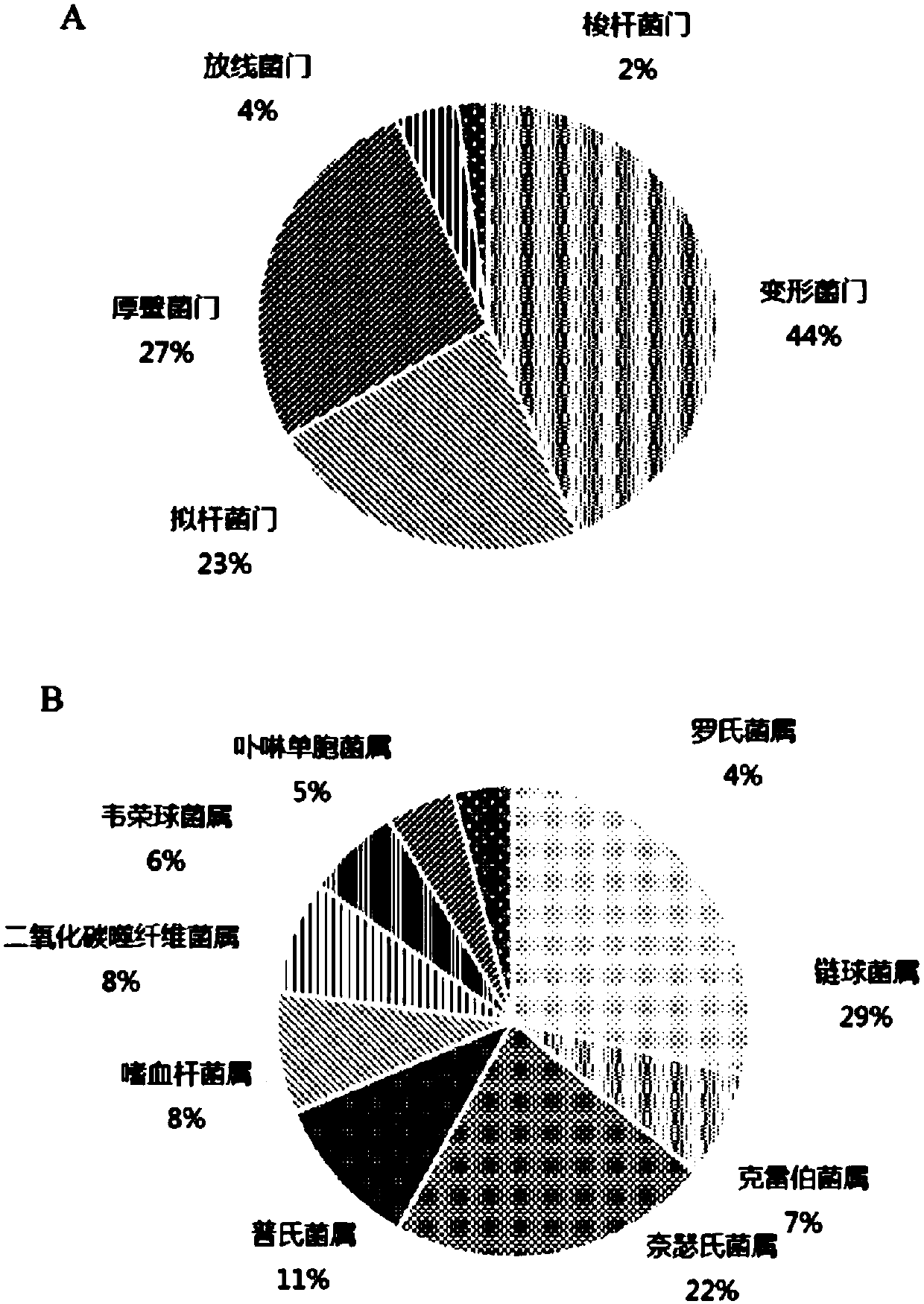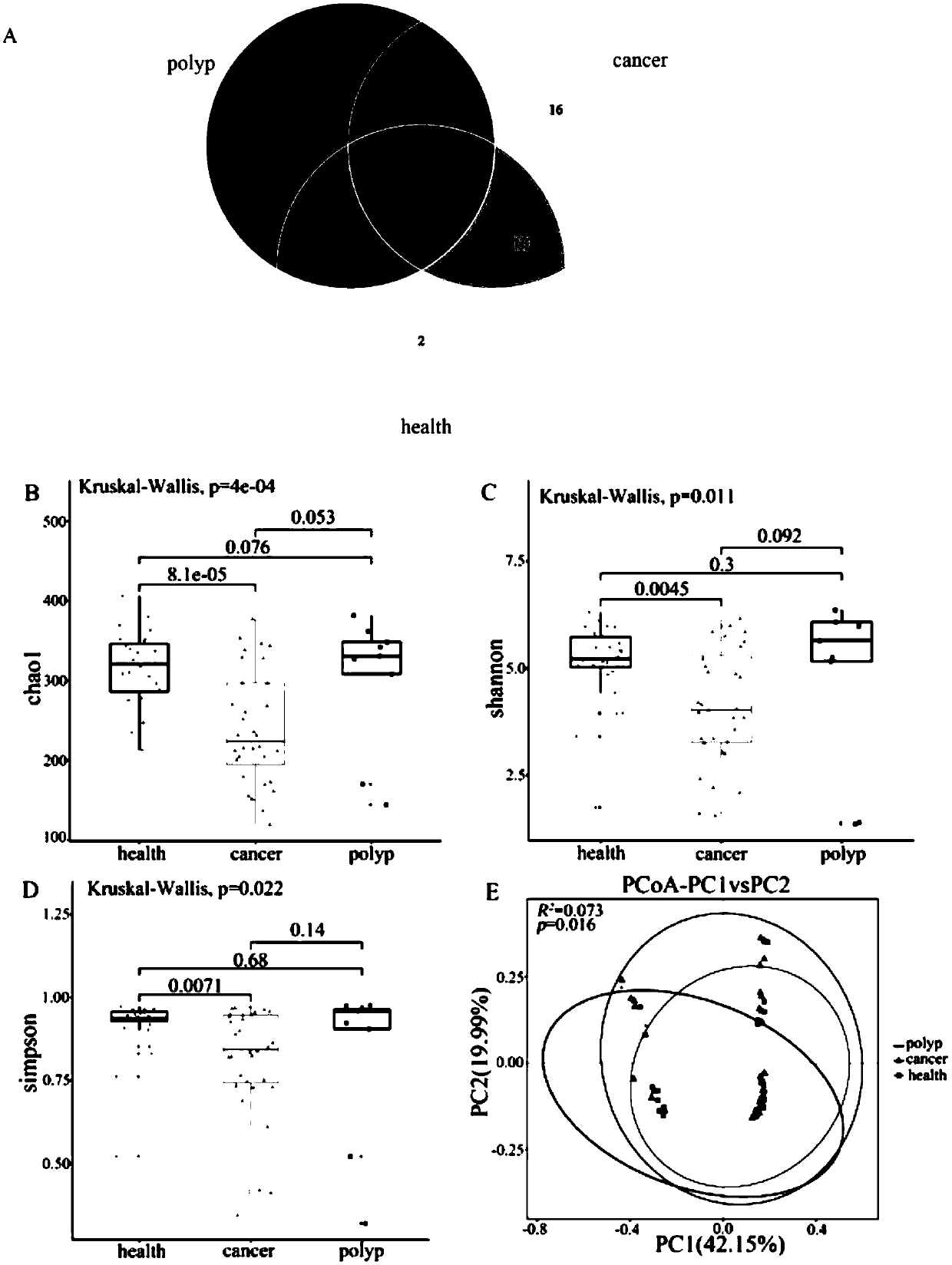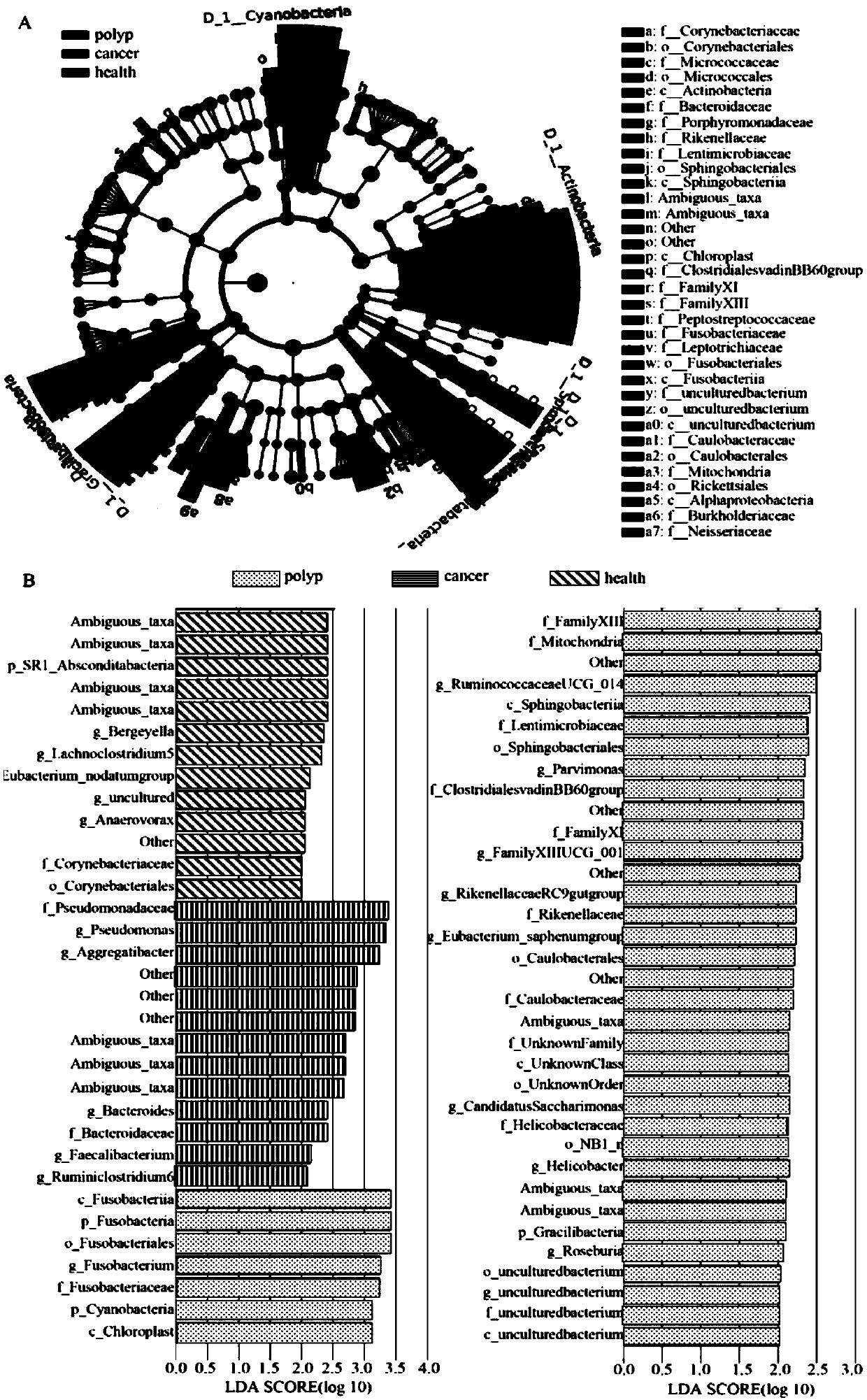Kit for diagnosing laryngeal cancer, and special biomarker of kit
A kit, a technology for laryngeal cancer, applied in the determination/examination of microorganisms, biochemical equipment and methods, DNA/RNA fragments, etc. question
- Summary
- Abstract
- Description
- Claims
- Application Information
AI Technical Summary
Problems solved by technology
Method used
Image
Examples
Embodiment 1
[0080] Example 1. Discovery of "biomarkers for the diagnosis of laryngeal cancer"
[0081] 1. Obtaining of saliva samples
[0082] The 32 cancer patient saliva samples were provided by 32 patients who had been clinically identified as laryngeal cancer.
[0083] Saliva samples from 9 patients with vocal cord polyps were provided by 9 patients who had clinically identified vocal cord polyps.
[0084] Saliva samples of 29 healthy individuals were provided by 29 healthy volunteers.
[0085] 2. Saliva flora analysis of the saliva samples to be tested
[0086] The cancer group consisted of 32 laryngeal cancer patients. The vocal cord polyposis group consisted of 9 patients with vocal cord polyps. The healthy group consisted of 29 healthy volunteers.
[0087] Genomic DNA was extracted from the saliva samples to be tested (composed of 32 saliva samples from cancer patients, 9 saliva samples from patients with vocal cord polyps and 29 samples from healthy individuals), and then th...
Embodiment 2
[0104] Example 2. Verification of "biomarkers for the diagnosis of laryngeal cancer"
[0105] 1. Obtaining of saliva samples
[0106] Same as Step 1 in Example 1.
[0107] 2. Real-time fluorescence quantitative PCR method to detect the relative abundance of the microorganisms to be tested
[0108] The cancer group consisted of 32 laryngeal cancer patients. The vocal cord polyposis group consisted of 9 patients with vocal cord polyps. The healthy group consisted of 29 healthy volunteers.
[0109] 1. Extract the genomic DNA of the saliva samples to be tested (composed of 32 saliva samples from cancer patients, 9 saliva samples from patients with vocal cord polyps, and 29 healthy people) and use them as templates to detect the samples to be tested by real-time fluorescent quantitative PCR The abundance of the microorganisms to be tested (Pseudomonas, Coagulum, Bacteroides, Faecalibacterium, or Clostridium rumenus) in saliva samples was then averaged by group.
PUM
 Login to View More
Login to View More Abstract
Description
Claims
Application Information
 Login to View More
Login to View More - R&D
- Intellectual Property
- Life Sciences
- Materials
- Tech Scout
- Unparalleled Data Quality
- Higher Quality Content
- 60% Fewer Hallucinations
Browse by: Latest US Patents, China's latest patents, Technical Efficacy Thesaurus, Application Domain, Technology Topic, Popular Technical Reports.
© 2025 PatSnap. All rights reserved.Legal|Privacy policy|Modern Slavery Act Transparency Statement|Sitemap|About US| Contact US: help@patsnap.com



